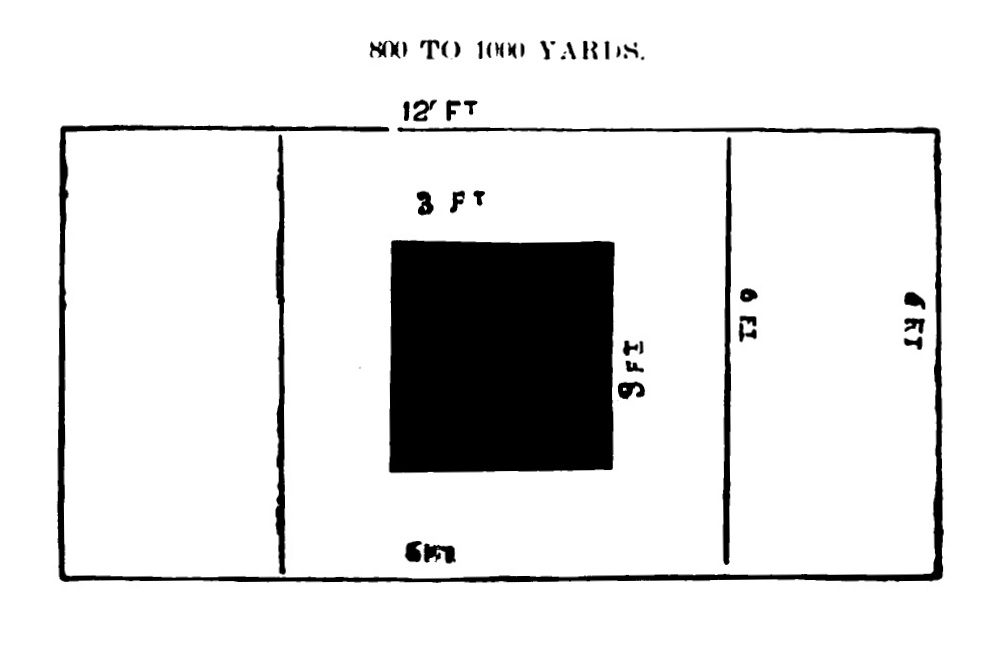You are here: Home > Marksmanship > The Creedmoor Era
Written by: David Minshall
Between July 1873 and May 1874 members the Amateur Rifle Club of New York fired seven matches at Creedmoor for their Gold Badge. Each comprised seven shots at 500 yards, with the Badge being held by each winner from match to match. Once won by someone three times, then the badge would belong to them forever. On 16 May 1874 John Bodine secured his third win and the Badge became his property.
On 30 May 1874 competition began for the new gold club badge. It was fired under similar conditions to the earlier matches; any rifle not over ten pounds in weight, the trigger not less than three pounds test pull; telescope sights excluded. Position, any, (without artificial rests). Course of fire however was five shots (plus two sighting shots) at 800, 900 and 1,000 yards. It was open only to Amateur Rifle Club members, who all fired at 800 and 900 yards. Only the eight highest scores after 900 yards were to progress to 1,000 yards.

The long range target at the time measured six feet high by 12 feet wide. There was a three feet square ‘bull’s-eye’, in the middle of the ‘centre’, measuring six feet square, with a three feet wide ‘outer’ at each end of the target. Scoring was ‘bull’s-eye’ 4, ‘centre’ 3, ‘outer’ 2.
Eighteen contestants were entered for the match, twelve used rifles by Sharps and six used rifles by Remington. Shooting weather was fine and a large number of spectators were on the ground at Creedmoor to watch proceedings. The competition was won by L.L. Hepburn (Remington) scoring 46 out of a possible 60, J. Bodine (Remington) on 44 was second and L.M. Ballard (Sharps) on 39 was third.
Four of the eight that fired at 1,000 yards, J.Bodine, H.A. Gildersleeve, L.L. Hepburn and G.W. Yale would eventually be selected for the US Team of six to compete against a team of Irish Riflemen at Creedmoor in September 1874. The remaining 1,000 yard competitors were L.M. Ballard, L. Bocker, A.B. Canfield and H.A. Roux.